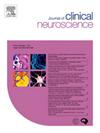Assessment of age-related variation in cervical neuroforaminal dimensions
IF 1.9
4区 医学
Q3 CLINICAL NEUROLOGY
引用次数: 0
Abstract
Radiographic parameters for diagnosing cervical neuroforaminal stenosis (CNFS) are not well described. To develop definitive criteria for diagnosis of CNFS, a standardized baseline of average neuroforaminal dimensions must first be established. Thus, the aim of this study was to: (1) use computed tomography (CT) of patients without neck pain or spinal pathology to establish mean cervical neuroforaminal dimensions (CNFD) across multiple age groups and (2) assess differences in CNFD by age. Cervical CT scans of 1,457 asymptomatic patients were reviewed to measure CNFD, defined as follows: axial width, craniocaudal height, and area. Patients were divided into four groups based on age: 18–35, 36–50, 51–64, and 65 + years. Statistical analyses were used to assess differences in CNFD according to age group. Mean overall CNFD for the 18–35 year-old cohort were 6.43 mm for width, 9.28 mm for height, and 58.85 mm2 for area. For the 36–50 year-old cohort, dimensions were 5.89 mm for width, 8.63 mm for height, and 52.78 mm2 for area. For the 51–64 year-old cohort, dimensions were 5.29 mm for width, 8.52 mm for height, and 48.93 mm2 for area. Finally, the 65 + year-old cohort had dimensions of 5.09 mm for width, 8.16 mm for height, and 45.91 mm2 for area. Significant differences in CNFD were observed between age groups, with dimensions decreasing in size from the younger to older age groups. In the studied population, CNFD decreased progressively with age. The results of our study may have utility in the diagnosis of CNFS.
求助全文
约1分钟内获得全文
求助全文
来源期刊

Journal of Clinical Neuroscience
医学-临床神经学
CiteScore
4.50
自引率
0.00%
发文量
402
审稿时长
40 days
期刊介绍:
This International journal, Journal of Clinical Neuroscience, publishes articles on clinical neurosurgery and neurology and the related neurosciences such as neuro-pathology, neuro-radiology, neuro-ophthalmology and neuro-physiology.
The journal has a broad International perspective, and emphasises the advances occurring in Asia, the Pacific Rim region, Europe and North America. The Journal acts as a focus for publication of major clinical and laboratory research, as well as publishing solicited manuscripts on specific subjects from experts, case reports and other information of interest to clinicians working in the clinical neurosciences.
 求助内容:
求助内容: 应助结果提醒方式:
应助结果提醒方式:


